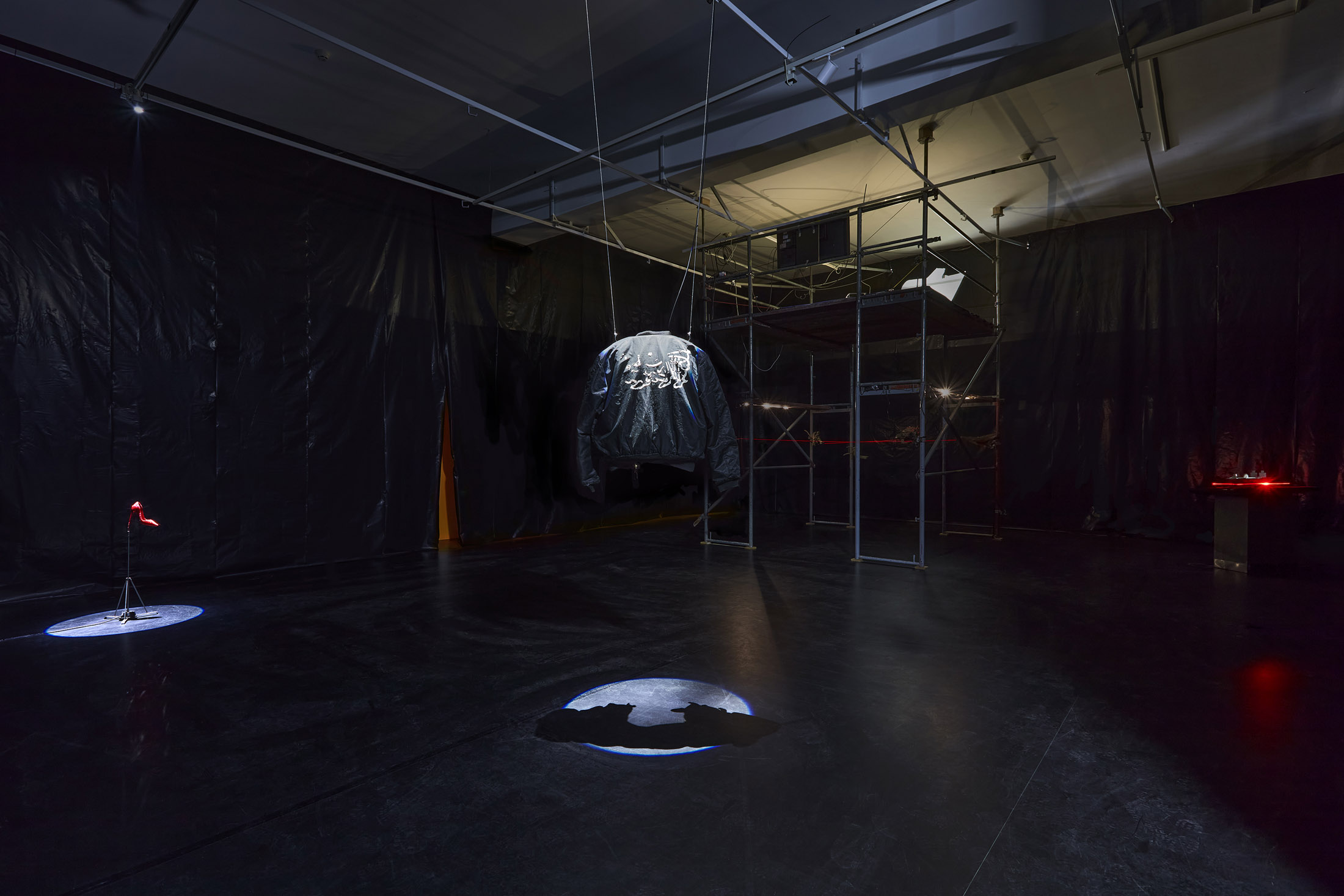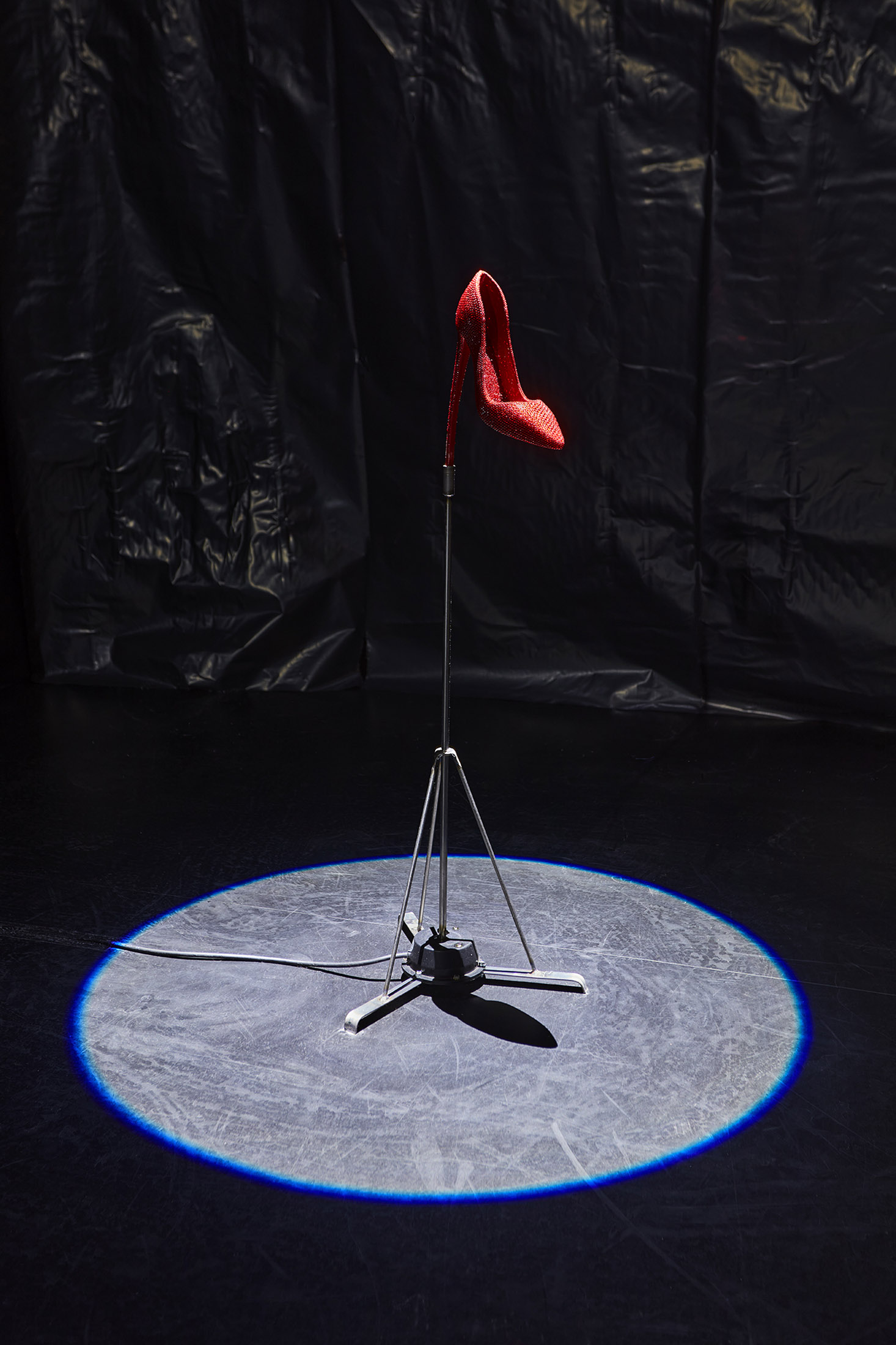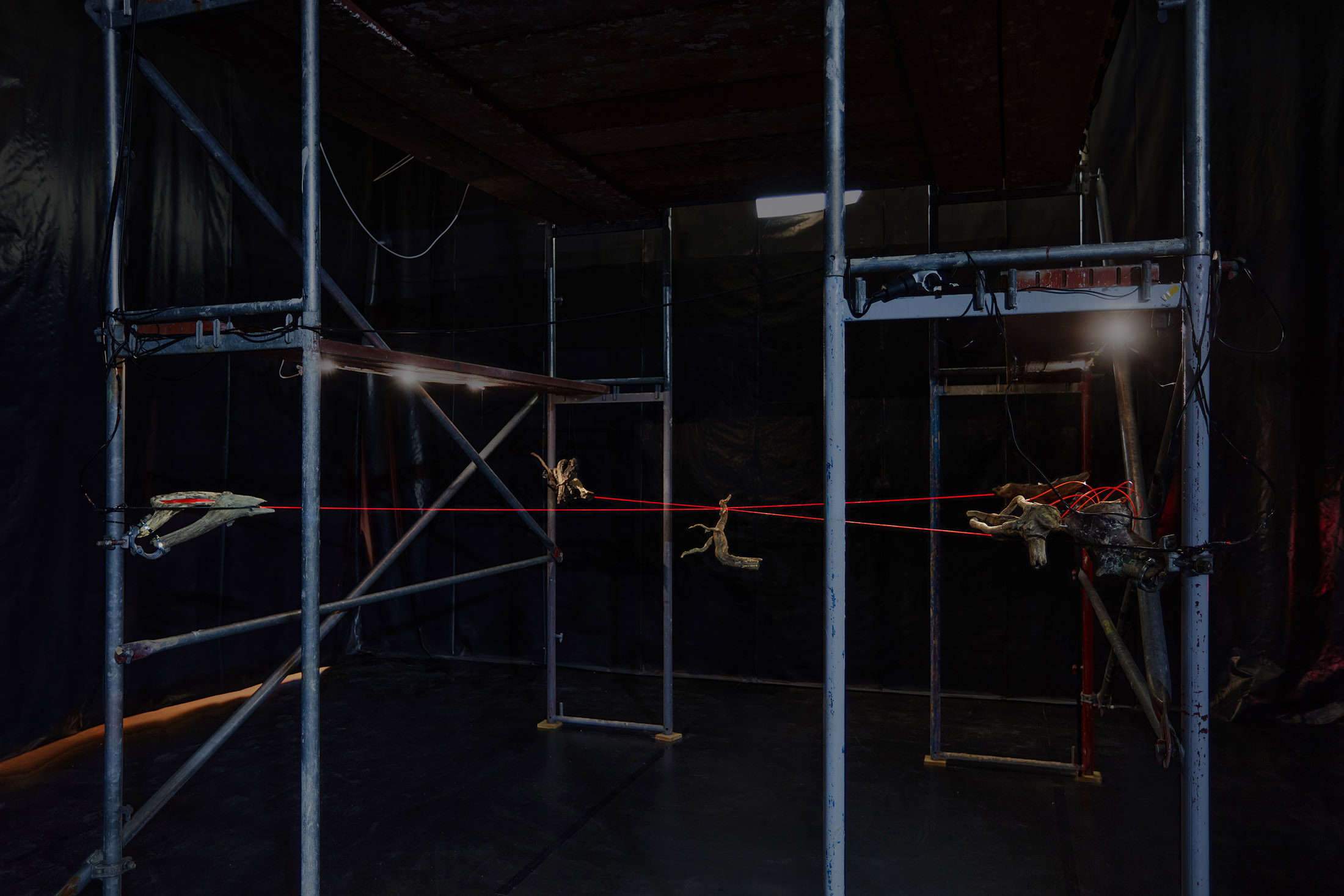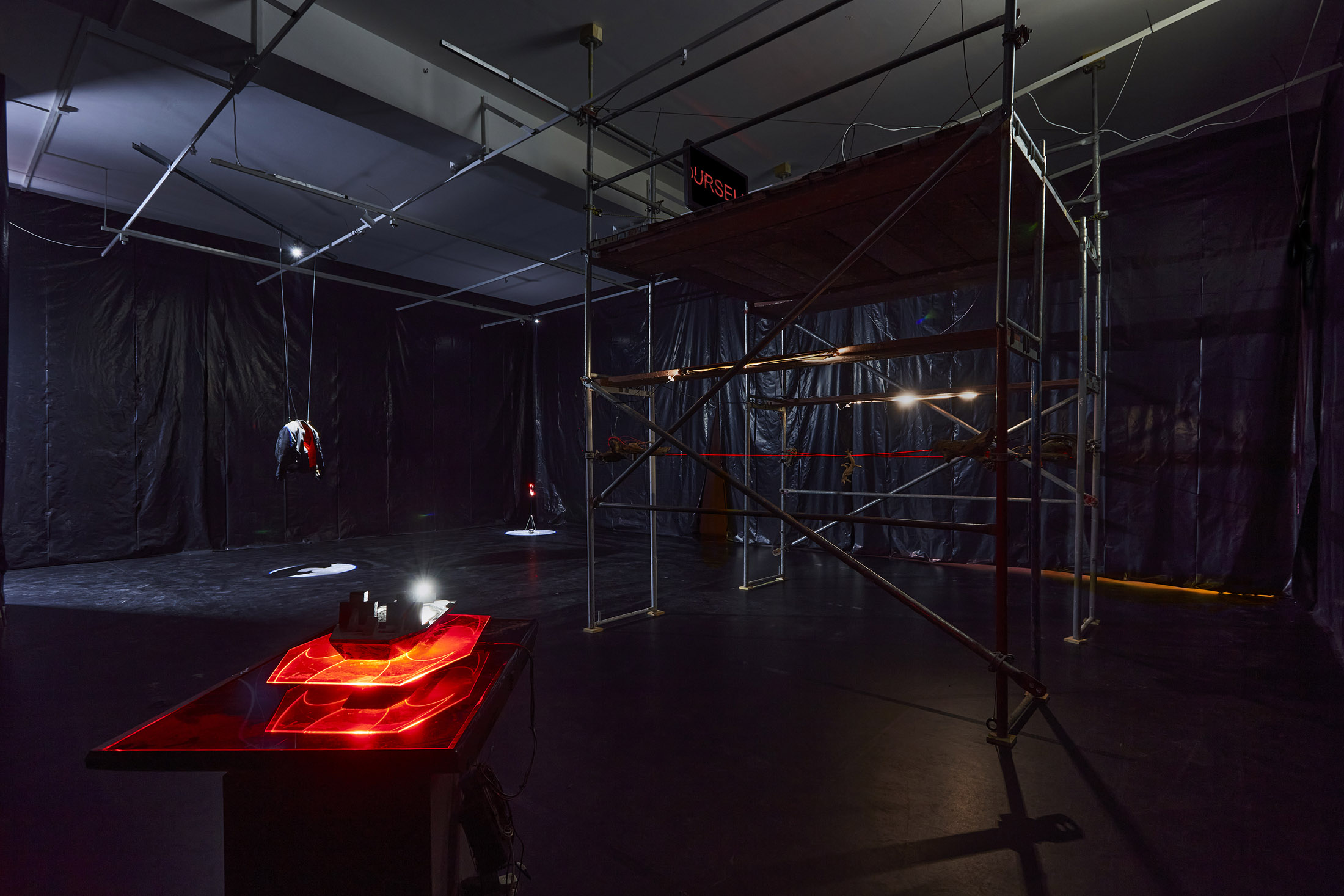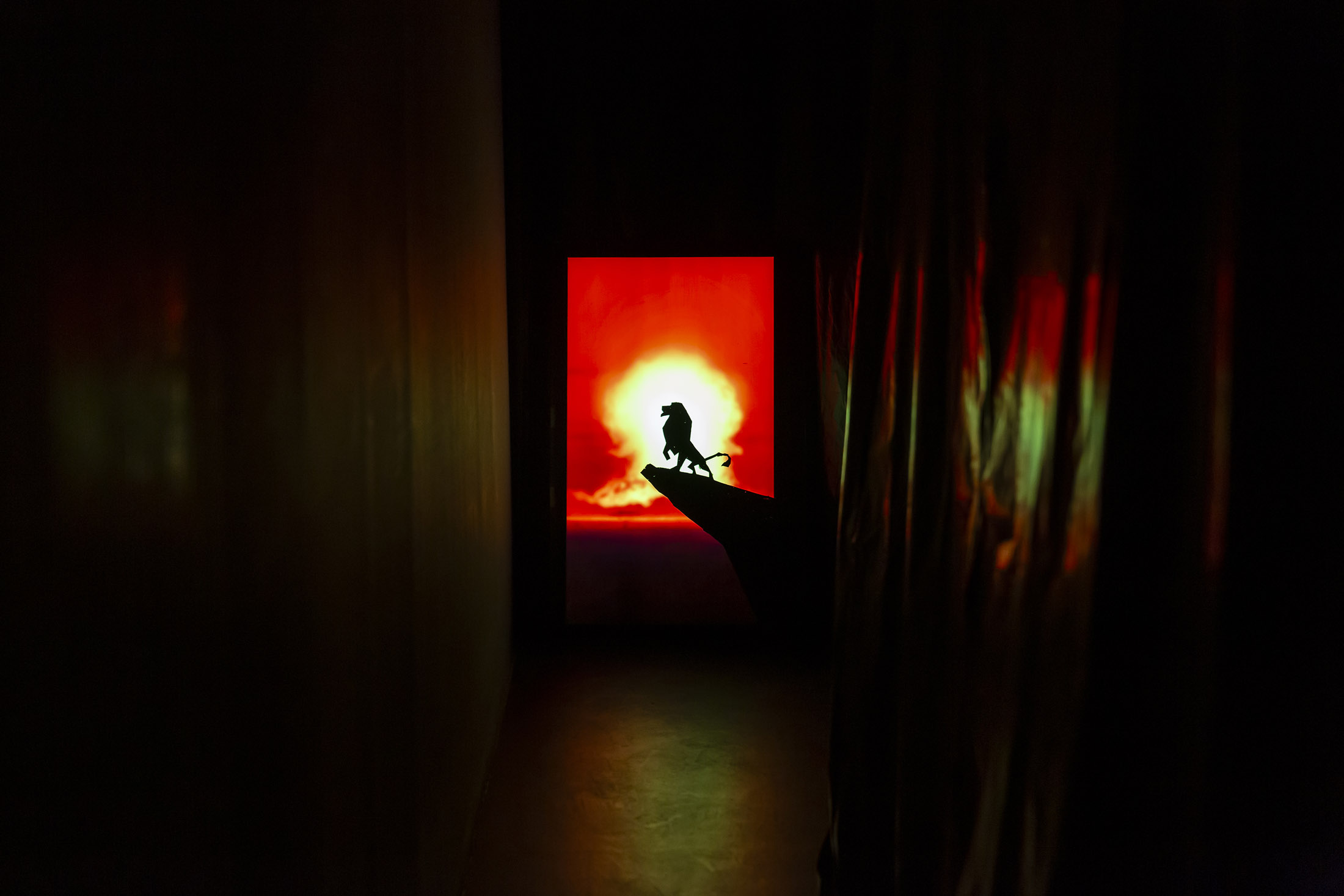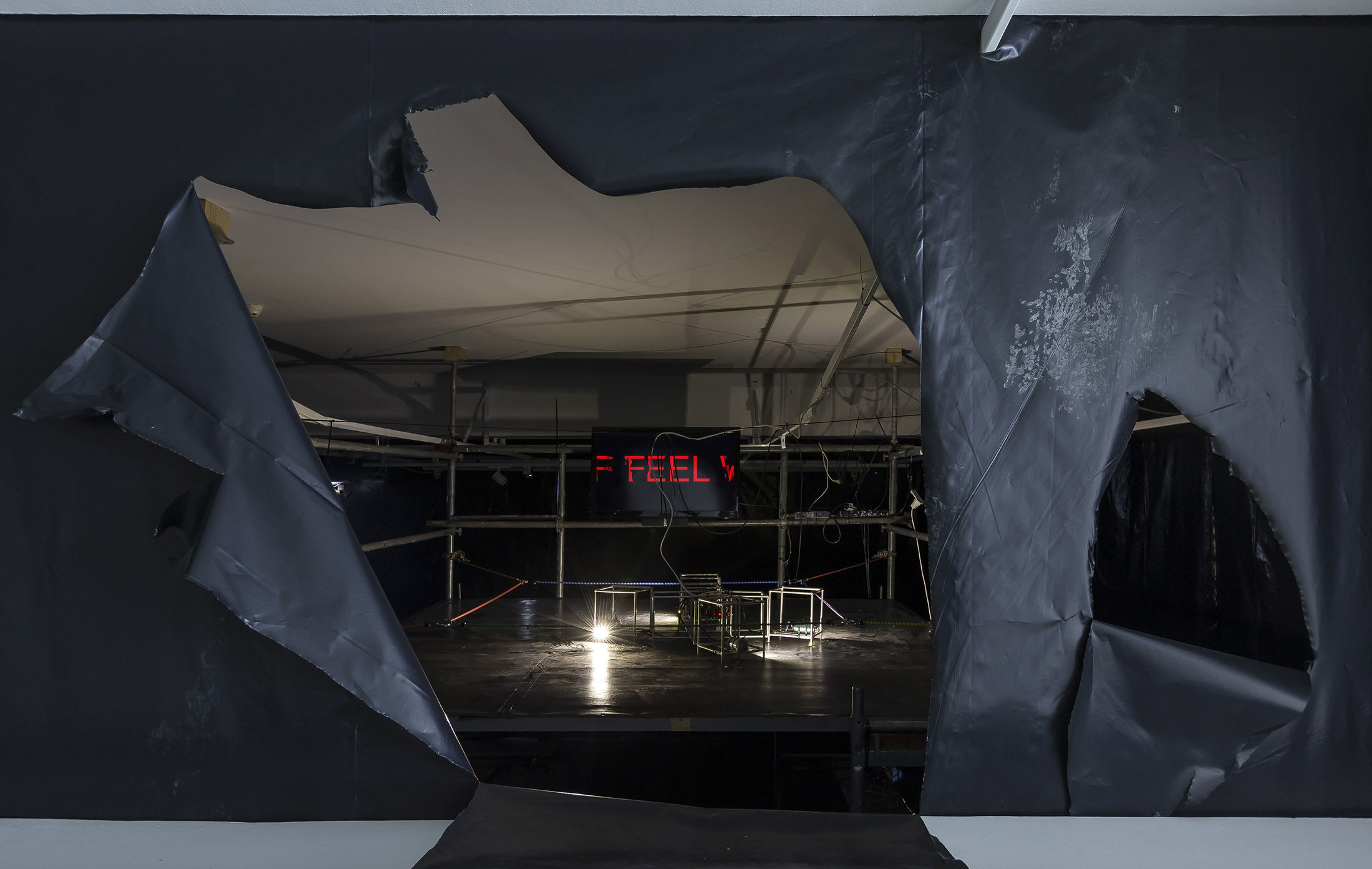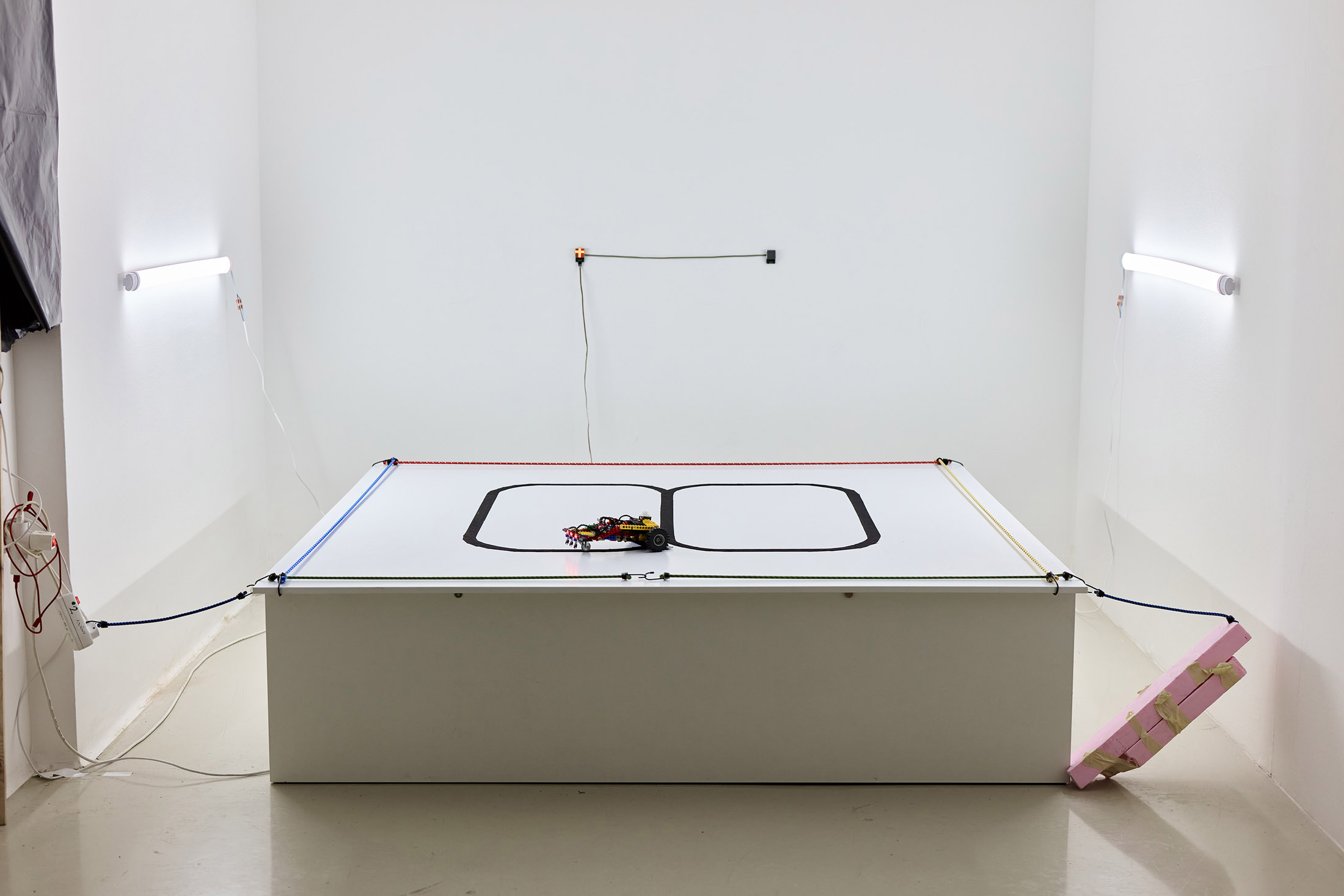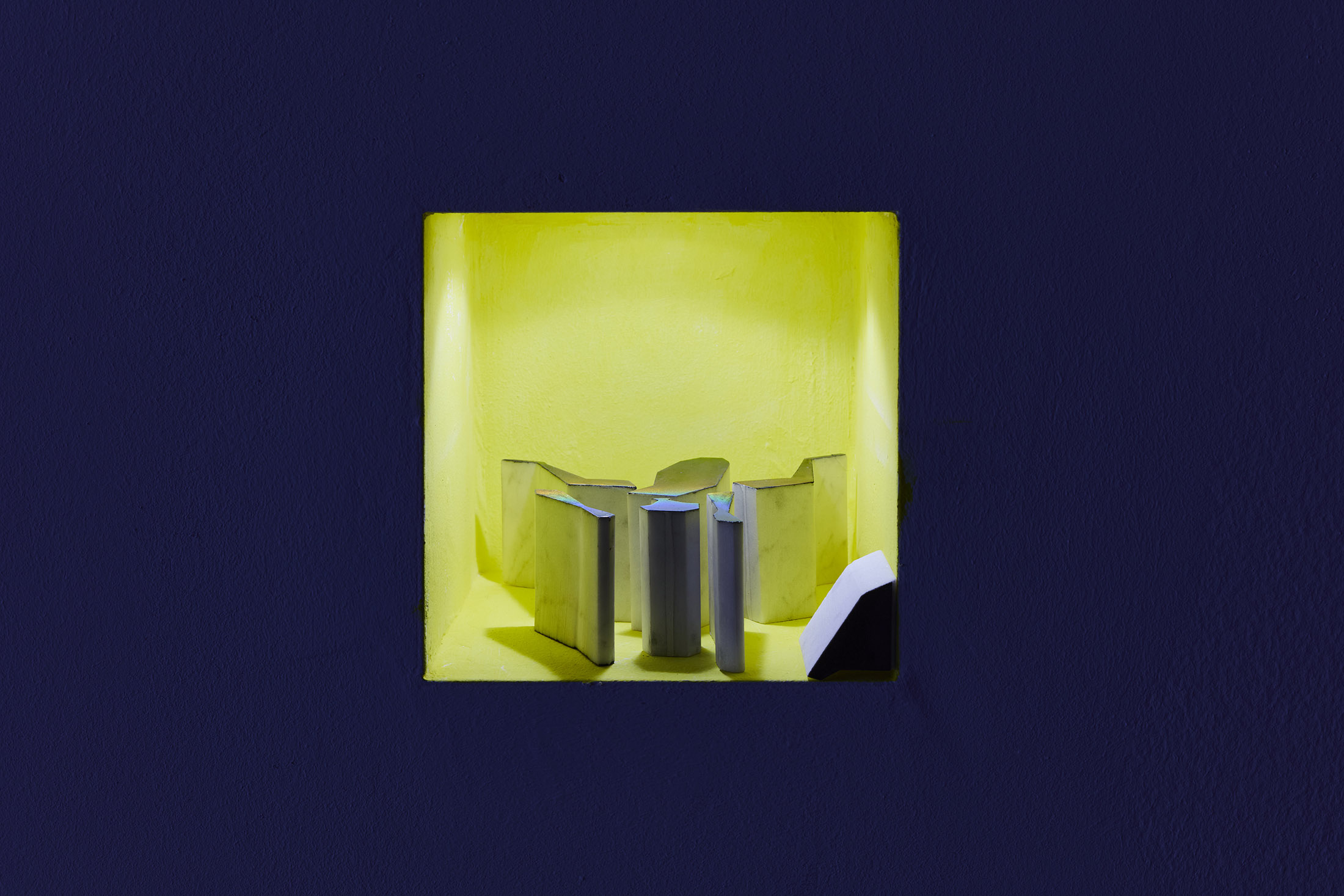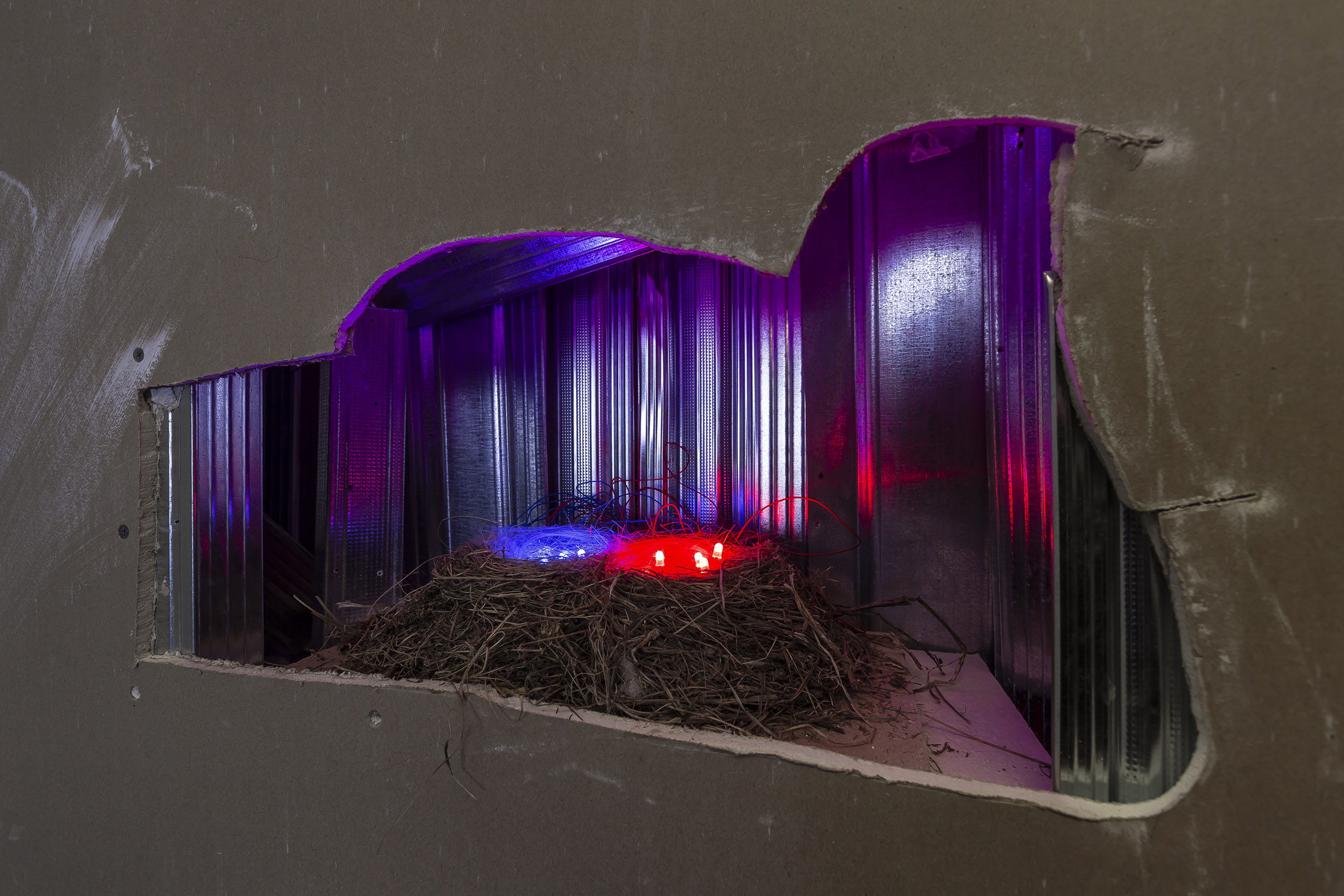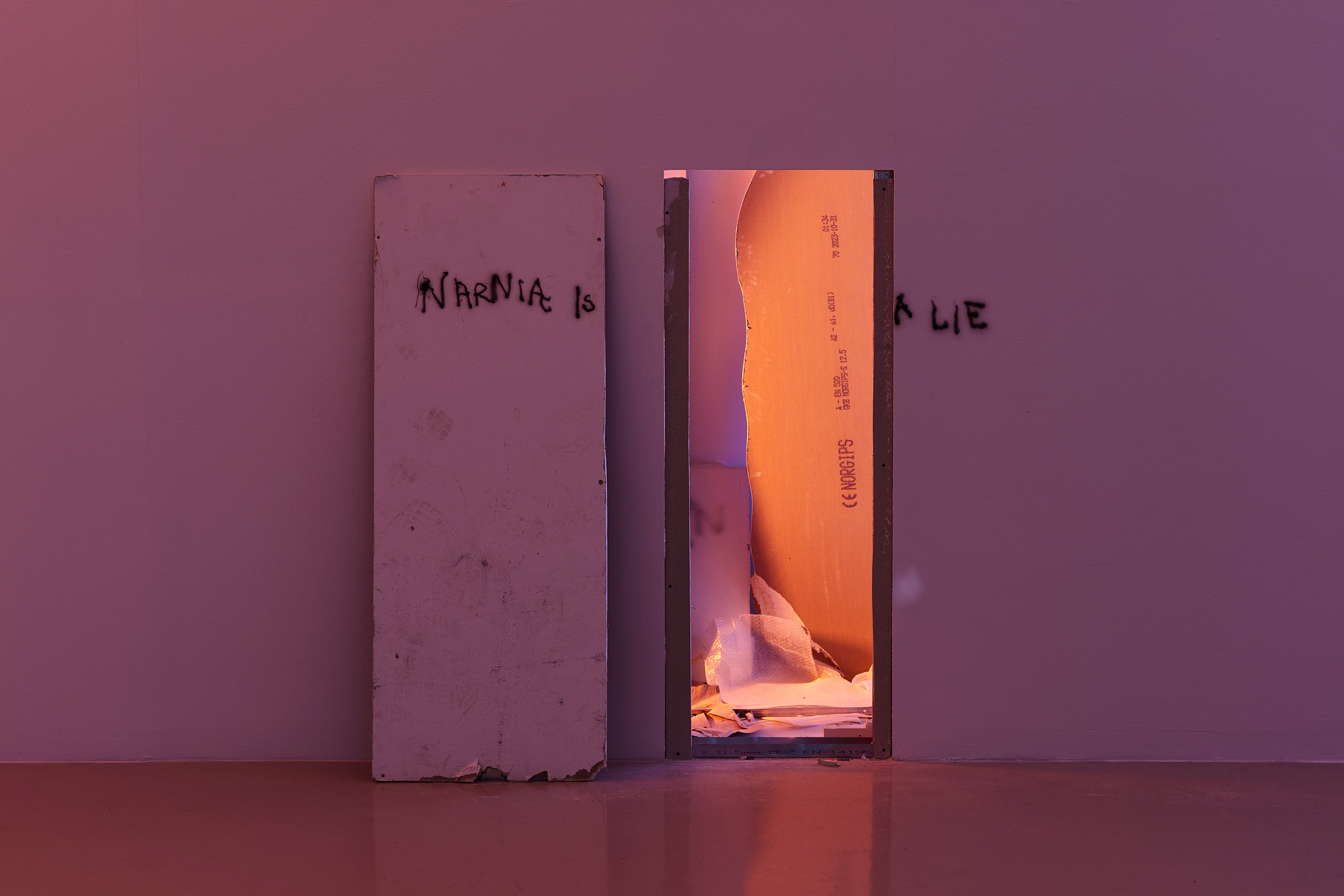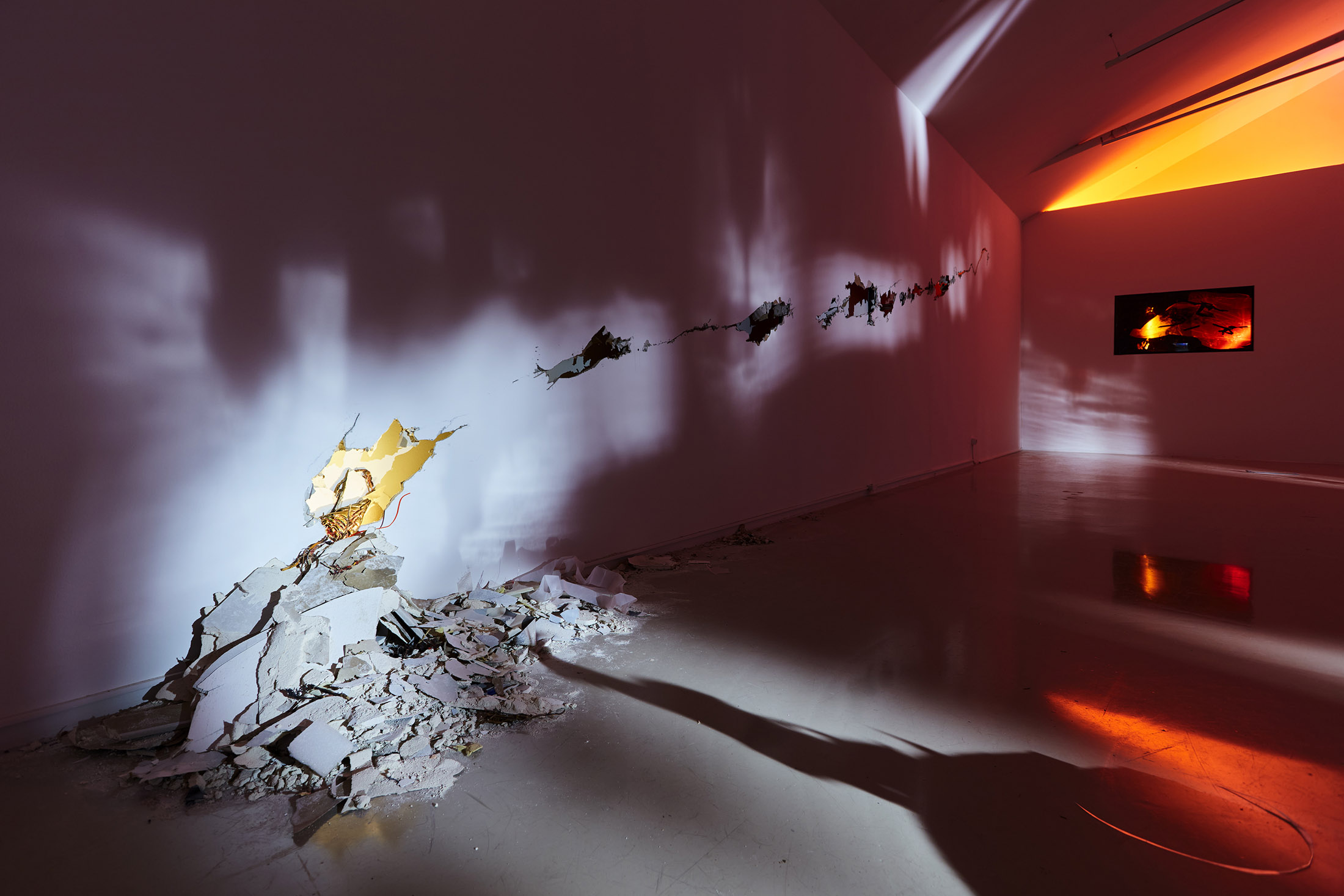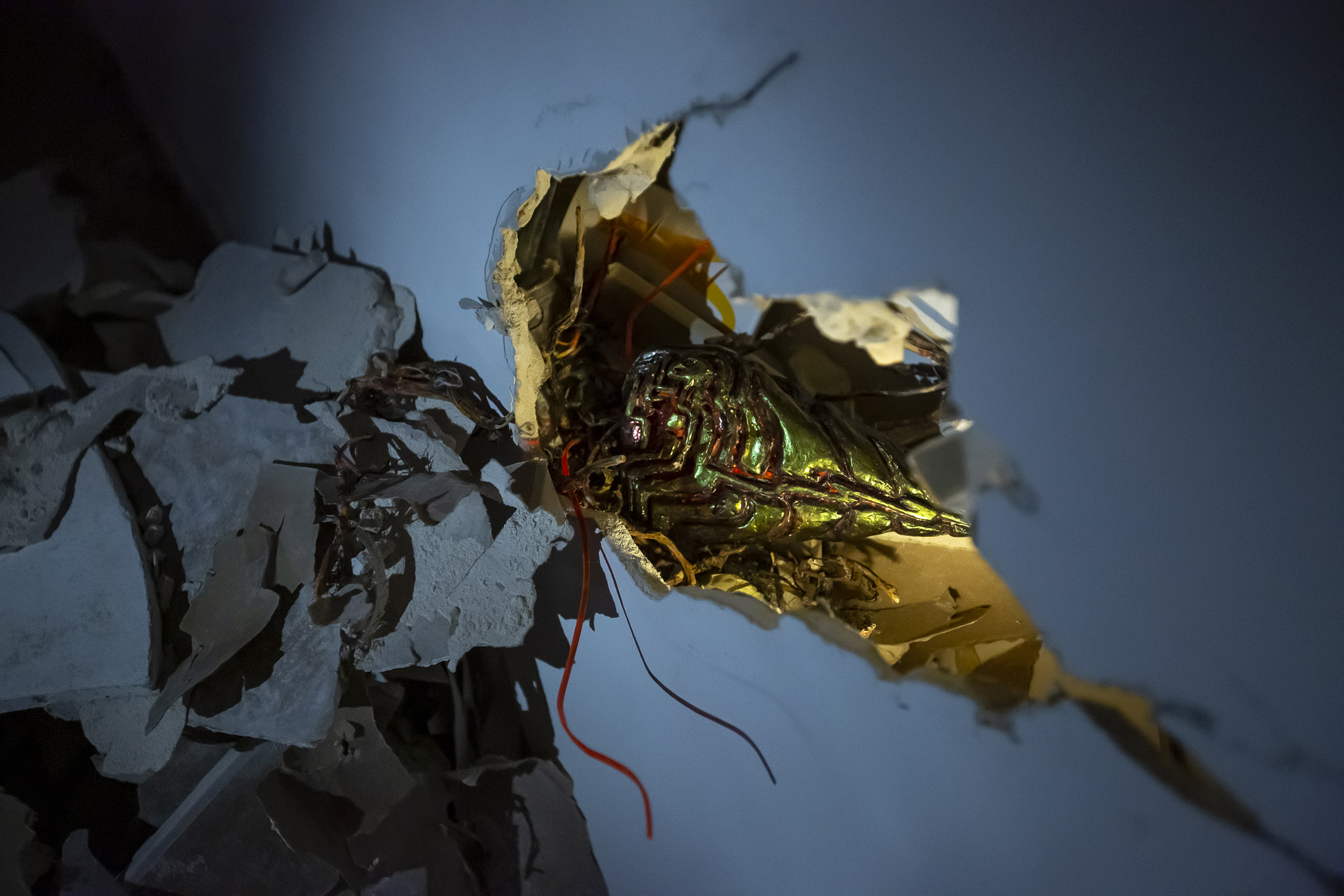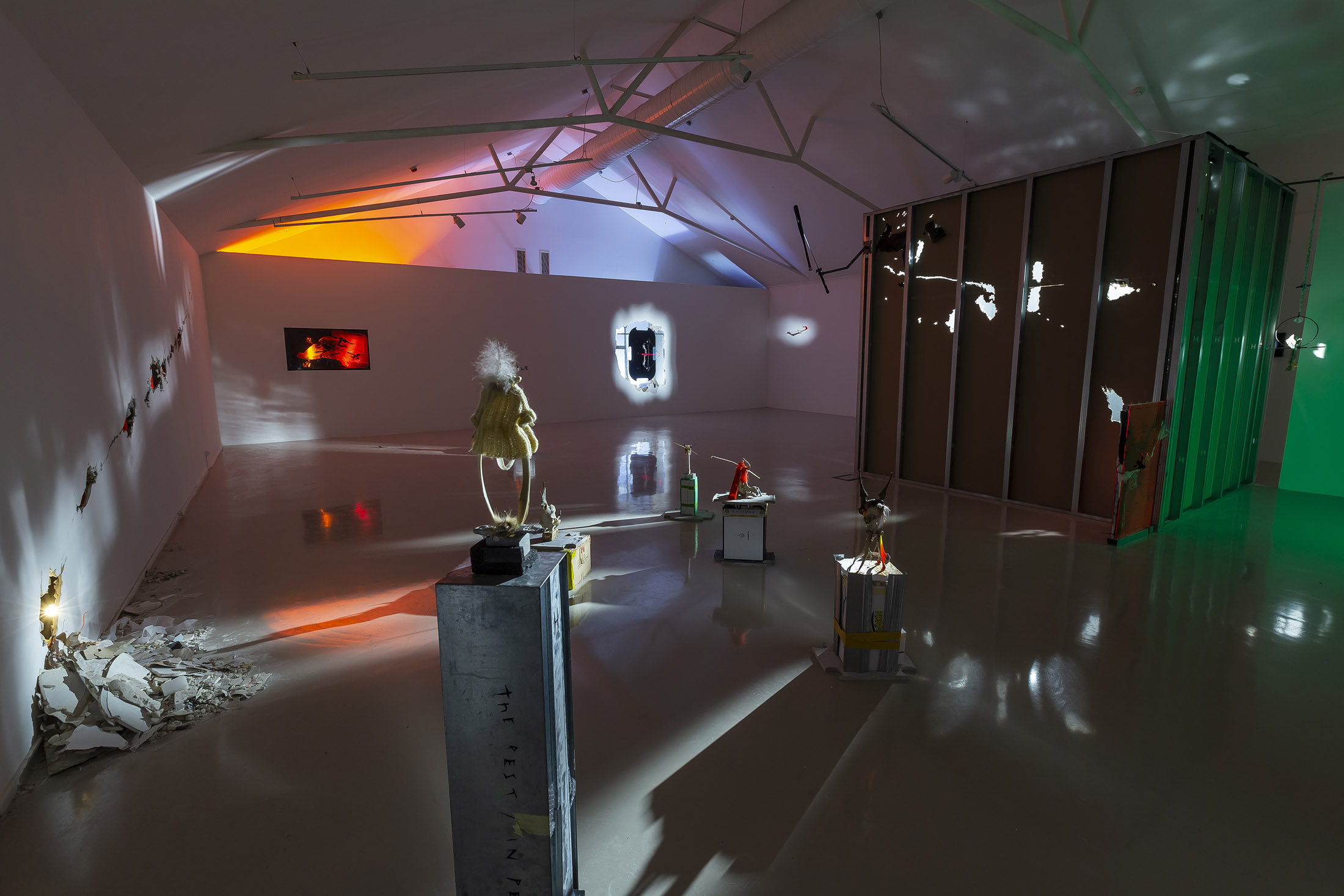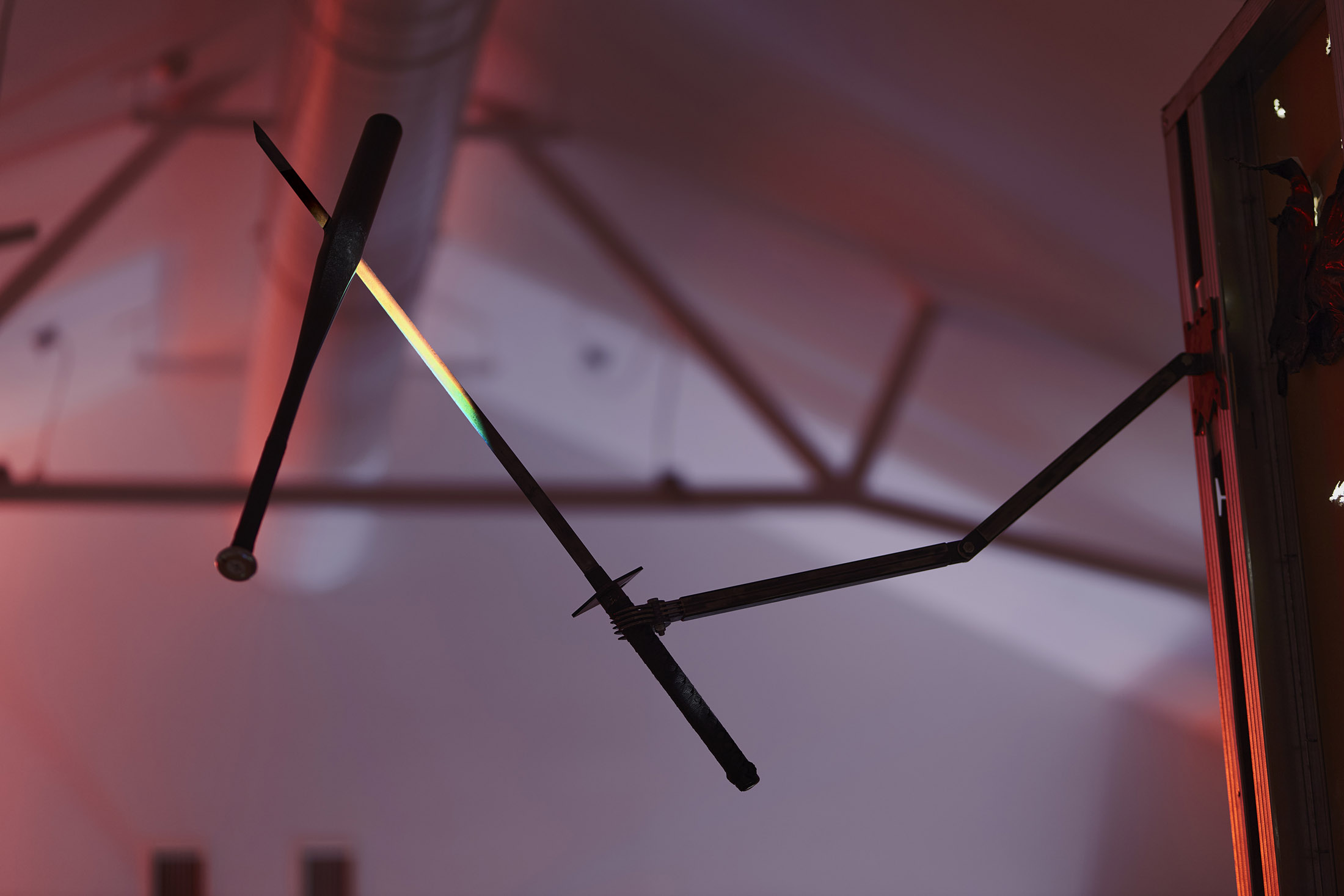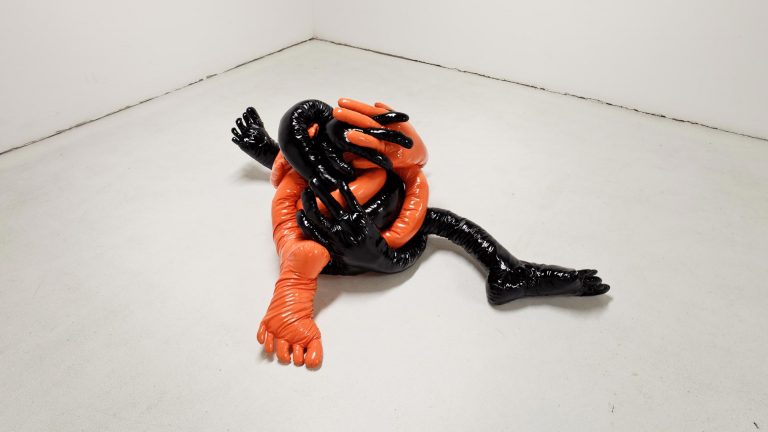Artist: Borsos Lőrinc
Exhibition title: For the Child of the Future
Curated by: Zsolt Miklósvölgyi
Venue: Ferenczy Múzeumi Centrum, Szentendre, Hungary
Date: November 25, 2023 – January 21, 2024
Photography: all images copyright and courtesy of the artist and Ferenczy Múzeumi Centrum, Szentendre
“But I went on,
I sneaked into the workshop,
into headstones and irons,
between rusty wagons.
Then there was the sleeping worker.
(S)he wheezed and whined,
then (s)he woke up and turned into a woman.
And then, in such a bandana,
with a mouth-fucking motion,
(s)he asked suggestively:
– What is the future of the artist?
I stared into the distance and burst into tears:
– Unsalvageable”
(Lőrinc Borsos)
“The future wants to steal your soul and vaporize it in nanotech.
One/Zero, Light/Dark, Neuromancer/Wintermute.”
(Nick Land)
“Bataille and the politics of Bataille do not want to speak to the existing subject, but to “THE CHILD OF THE FUTURE”. The child of the future—the full-fledged cyborg-wolf-man—is beyond the left/right polarity.”
(Márk Horváth – Ádám Lovász)
In comparison to the creative strategies that have characterized their work so far, the latest solo exhibition by the artist couple Lőrinc Borsos, titled For the Child of the Future, can be seen as a turning point in their oeuvre. After their initial, mainly politically and socially critical works, followed by a self-mythologizing and self-analytical tone, their current works are marked by more experimental world-building strategies that can also be related to video and role-playing games. The artworks and installations to be presented at the Ferenczy Museum aim to create similar speculative realities. In addition to the darker aesthetics typically associated with the artists, known as the “nocturnal side of painting,” this exhibition also strives to establish a new, more informal, and experimental artistic language. The first part of the installation space, which can be dramaturgically divided into two main sections, offers a glimpse into the magical rites and props of a techno-tribe existing beyond our world. In contrast, the second part transports us into a strangely over-lit space where an alternative reality, parallel to our own, welcomes us beyond the museum’s distorted walls. It’s a peculiar otherworld that initially makes it hard to determine whether it was constructed for the children of the future or if they built it for us.
The new exhibition by the Lőrinc Borsos artist duo can be interpreted as taking their aesthetic and psychological self-examination, which has been ongoing for many years, to a new level. However, the presented material is not just another stage in the construction of mythology but also an invitation to the viewers. Alternatively, it is an aesthetic endeavor to create a cross-generational community spirit whose aim is to collectively envision a post-apocalyptic world. Yet, the purpose of this exhibition is not primarily to evoke visions of the end of the world, as the oscillation between endless completion and reconstruction is more characteristic of this dialectical world.
For example, the construction scaffolding, which can also be considered a central element of the exhibition, and the related accessories, simultaneously represent the restoration of a world after its destruction and the architectural promises of a new world’s possibility. In other words, they symbolize a transition between the gestures of scenic architecture and destruction, speculative world-building, and world destruction. These gestures may be just as recognizable in literary discourses of narratology, video game theories, as well as the worlds of theater, or LARP (live-action role-playing). This is an imagined fictional scenario in which images of potential antecedents and conceivable consequences appear simultaneously. Therefore, it’s not merely a science fiction world since in sci-fi reality, there is always a complete world against which individual worldmaking elements are created. Here, however, the contours of a possible world are outlined, and individual objects, signs, gestures, and emotions only hint at the seeds of these world possibilities. Consequently, the duality of the spatial organization of the exhibition creates a kind of dialectical tension where the counterparts do not necessarily contradict each other, at least in aesthetic terms. In other words, it’s a transcendental tension that emerges within the creators’ lives but can also be aesthetically decoded, oscillating between the aporetic qualities of this world and the beyond, home and distant, together and separate, unique and common.
However, this tension also represents the incorporation of a reevaluated artistic program. For instance, the elements of painting that only briefly appear during the exhibition as symbols are, in fact, part of a new painting series. These elements also draw inspiration from medieval traditions depicting the transfiguration of Christ. They not only evoke the theology of transfiguration but also resonate with the ideas of the American art critic and philosopher, Arthur C. Danto. According to Danto, art, and the institutional practices associated with it, possess a transformative power that is capable of transforming experiences of mundane reality into extraordinary ones.
In the case of Lőrinc Borsos, this transformative quality is evident in the tableaus that employ iridescent, rainbow-like transitions. Here, the use of the color black, which was previously the primal chromatic quality of Lőrinc Borsos’ art, producing a bright, reflective surface and an expression of artistic self-reflection, literally breaks down into its constituent colors through a prism. In other words, what used to be an allegory and a means of communication between the two creators now emerges as an emblem of prismatic diversity and multitude.
The second part of the exhibition, which distorts the discourse and architectural features of the institution, reflects on this gesture. It also serves as a creative proposal for reshaping and twisting the museum space itself. This is symbolized in the project by the viewer’s creative gaze directed beyond the conventional view, which doesn’t merely unveil the existing space but opens up a new artistic reality for exploration. Consequently, we glimpse an alternative reality that is less influenced by the destructive tendencies of futurism and more by the eerie atmospheres of dystopian realism. It’s as if the visions of Gaspar Noé, Panos Cosmatos, or the psychedelic fantasy spaces of Stanley Kubrick’s 2001: A Space Odyssey, and particularly the films of Nicolas Winding Refn, come to life, this time presented in the form of the museum’s dazzling spectacles emerging from behind the walls, characterized by the interplay of blue and red neon lights.
Throughout the entire exhibition, the most recent world-building efforts of the artist couple, Lőrinc Borsos, will take center stage. Objects fluctuating between states of appearance and disappearance will appear not only as standalone artworks but also as components of an independent aesthetic toolkit within a comprehensive total installation. Similar to the elements in the seemingly boundless arsenal of the movie Matrix, here, the objects integrated into the wall seem to lack their inherent potential. However, this tangible presence, which is interpreted as an absence, is not a genuine void, as it envisions an imaginary reality with prerequisites that continuously postpone the future. A future in which unfulfilled promises continually haunt us.
Borsos Lőrinc, For the Child of the Future, 2024, exhibition view, Ferenczy Múzeumi Centrum, photo: Dávid Bíró
Borsos Lőrinc, Inner Migration (feat. Péter Márton, Eszter Nagy, Stach Szumski), bomber jacket, light animation with neon wire, 70x70x30 cm, 2023 – photo by Balázs Deim
Borsos Lőrinc, Third Shoe 2, 3d print, crystals, rotating metal holder, 2023, photo by Dávid Bíró
Borsos Lőrinc, Cliffhanger, Suspended Game (feat. Eszter Nagy), scaffolding, tree branches, glowing neon wire, variable sizes, 2023, photo by Dávid Bíró
Borsos Lőrinc, For the Child of the Future, 2024, exhibition view, Ferenczy Múzeumi Centrum, photo: Dávid Bíró
Borsos Lőrinc, Ark for the Wild Children, plexi, polystyrene, marbling, water fountain, mini sound system on broken LCD screen, 110x60x30 cm, 2022, photo by Balázs Deim
Borsos Lőrinc, The Lion King, video loop, enamel paint, 2019, photo by Balázs Deim
Borsos Lőrinc, exhibition view with Rat King, Animator, photo by Dávid Bíró
Borsos Lőrinc, Rat King (feat. Zalán Adorján), metal structure with engines and stroboscope, variable sizes, 2023 + Animator (feat. Máté Kovács), video loop, 2023, photo by Dávid Bíró
Borsos Lőrinc, Randomator, line follower robot car, LEGO, variable sizes, 2023, photo by Balázs Deim
Borsos Lőrinc, Compass, marble, enamel, metallic paint, variable sizes, 2023, photo by Dávid Bíró
Borsos Lőrinc, Police Nest, mixed media, variable sizes, 2023, photo by Balázs Deim
Borsos Lőrinc, Body Without Organs, marble block, light installment, 20x30x5 cm, 2022-2023, photo by Dávid Bíró
Borsos Lőrinc, The Transfiguration of Our Lord 1 (feat. Theophanes the Greek) / plexi box, 3d print, enamel paint, 20x30x5 cm, 2023, photo by Dávid Bíró
Borsos Lőrinc, The Transfiguration of Our Lord 7 (feat. unknown master), photo by Dávid Bíró
Borsos Lőrinc, Slingshot, bones, plexi, rubber band, approx. 40x20x10 cm, 2023, photo by Dávid Bíró
Borsos Lőrinc, Rest Energy remix, plexi, children’s bow, glass, laser, 120x70x50 cm, 2023, photo by Dávid Bíró
Borsos Lőrinc, LEGION intervention, mixed media, variable sizes, 2023, photo by Dávid Bíró
Borsos Lőrinc, exhibition view with Cheetahman Stone, photo by Dávid Bíró
Borsos Lőrinc, Cheetahman Stone, mixed media, variable sizes, 2023, photo by Balázs Deim
Borsos Lőrinc, For the Child of the Future, 2024, exhibition view, Ferenczy Múzeumi Centrum, photo: Balázs Deim
Borsos Lőrinc, Kardi B, sword, baseball bat, metal holder, metallic paint, approx. 115×15 cm, 2023, photo by Dávid Bíró
Borsos Lőrinc, Guestbook by LEGION, plexi, metal, textile, paper, mixed media, 100×70 cm, 2023, photo by Dávid Bíró
Borsos Lőrinc, Vitalis, marble, bone, feathers, nails, incense sticks, enamel paint, 35×20 cm, 2023, photo by Dávid Bíró
Borsos Lőrinc, Herczegh, skull, antlers, hair, teeth, necklace, silicone toy parts, 45x20x20 cm, 2023, photo by Balázs Deim
Borsos Lőrinc, Capitalism 2, wood, marble, metal, dried flowers, toy parts, 25×25 cm, 2023, photo by Dávid Bíró
Borsos Lőrinc, Marcell Horváth: Aggression is the Fringe of Boys, mixed media, variable sizes, 2023, photo by Dávid Bíró
Borsos Lőrinc, Tron, wood, metal, antlers, bones, toys, RGB stroboscope, sound piece by Máté Janky, variable sizes, 2023, photo by Balázs Deim


